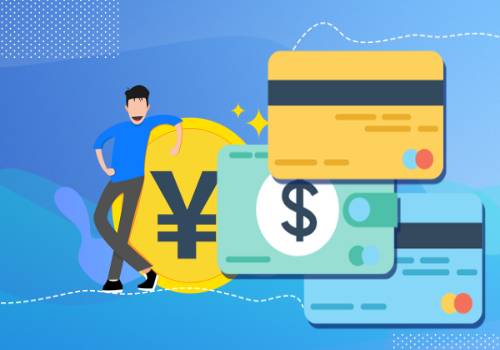上一篇,我们讲了 Angular 结合 NG-ZORRO 快速开发。前端开发,很大程度上是组件化开发,永远离不开组件之间的通信。那么,在 Angular开发中,其组件之间的通信是怎么样的呢?【相关教程推荐:《angular教程》】
本文纯文字,比较枯燥。因为控制台打印的东西比较鸡肋,所以就不配图了,嗯~希望读者跟着说明代码走一遍更容易吸收~
 (资料图片)
(资料图片)
相当于你自定义了一个属性,通过组件的引入,将值传递给子组件。Show you the CODE。
<!-- parent.component.html --><app-child [parentProp]=""My kid.""></app-child>
在父组件中调用子组件,这里命名一个 parentProp的属性。
// child.component.tsimport { Component, OnInit, Input } from "@angular/core";@Component({ selector: "app-child", templateUrl: "./child.component.html", styleUrls: ["./child.component.scss"]})export class ChildComponent implements OnInit { // 输入装饰器 @Input() parentProp!: string; constructor() { } ngOnInit(): void { }}子组件接受父组件传入的变量 parentProp,回填到页面。
<!-- child.component.html --><h1>Hello! {{ parentProp }}</h1>通过 new EventEmitter()将子组件的数据传递给父组件。
// child.component.tsimport { Component, OnInit, Output, EventEmitter } from "@angular/core";@Component({ selector: "app-child", templateUrl: "./child.component.html", styleUrls: ["./child.component.scss"]})export class ChildComponent implements OnInit { // 输出装饰器 @Output() private childSayHi = new EventEmitter() constructor() { } ngOnInit(): void { this.childSayHi.emit("My parents"); }}通过 emit通知父组件,父组件对事件进行监听。
// parent.component.tsimport { Component, OnInit } from "@angular/core";@Component({ selector: "app-communicate", templateUrl: "./communicate.component.html", styleUrls: ["./communicate.component.scss"]})export class CommunicateComponent implements OnInit { public msg:string = "" constructor() { } ngOnInit(): void { } fromChild(data: string) { // 这里使用异步 setTimeout(() => { this.msg = data }, 50) }}在父组件中,我们对 child组件来的数据进行监听后,这里采用了 setTimeout的异步操作。是因为我们在子组件中初始化后就进行了 emit,这里的异步操作是防止 Race Condition竞争出错。
我们还得在组件中添加 fromChild这个方法,如下:
<!-- parent.component.html --><h1>Hello! {{ msg }}</h1><app-child (childSayHi)="fromChild($event)"></app-child>我们通过操纵引用的方式,获取子组件对象,然后对其属性和方法进行访问。
我们先设置子组件的演示内容:
// child.component.tsimport { Component, OnInit } from "@angular/core";@Component({ selector: "app-child", templateUrl: "./child.component.html", styleUrls: ["./child.component.scss"]})export class ChildComponent implements OnInit { // 子组件的属性 public childMsg:string = "Prop: message from child" constructor() { } ngOnInit(): void { } // 子组件方法 public childSayHi(): void { console.log("Method: I am your child.") }}我们在父组件上设置子组件的引用标识 #childComponent:
<!-- parent.component.html --><app-child #childComponent></app-child>
之后在 javascript文件上调用:
import { Component, OnInit, ViewChild } from "@angular/core";import { ChildComponent } from "./components/child/child.component";@Component({ selector: "app-communicate", templateUrl: "./communicate.component.html", styleUrls: ["./communicate.component.scss"]})export class CommunicateComponent implements OnInit { @ViewChild("childComponent") childComponent!: ChildComponent; constructor() { } ngOnInit(): void { this.getChildPropAndMethod() } getChildPropAndMethod(): void { setTimeout(() => { console.log(this.childComponent.childMsg); // Prop: message from child this.childComponent.childSayHi(); // Method: I am your child. }, 50) }}这种方法有个限制?,就是子属性的修饰符需要是 public,当是 protected或者 private的时候,会报错。你可以将子组件的修饰符更改下尝试。报错的原因如下:
| 类型 | 使用范围 |
|---|---|
| public | 允许在累的内外被调用,作用范围最广 |
| protected | 允许在类内以及继承的子类中使用,作用范围适中 |
| private | 允许在类内部中使用,作用范围最窄 |
我们结合 rxjs来演示。
rxjs是使用 Observables的响应式编程的库,它使编写异步或基于回调的代码更容易。
后期会有一篇文章记录 rxjs,敬请期待
我们先来创建一个名为 parent-and-child的服务。
// parent-and-child.service.tsimport { Injectable } from "@angular/core";import { BehaviorSubject, Observable } from "rxjs"; // BehaviorSubject 有实时的作用,获取最新值@Injectable({ providedIn: "root"})export class ParentAndChildService { private subject$: BehaviorSubject<any> = new BehaviorSubject(null) constructor() { } // 将其变成可观察 getMessage(): Observable<any> { return this.subject$.asObservable() } setMessage(msg: string) { this.subject$.next(msg); }}接着,我们在父子组件中引用,它们的信息是共享的。
// parent.component.tsimport { Component, OnDestroy, OnInit } from "@angular/core";// 引入服务import { ParentAndChildService } from "src/app/services/parent-and-child.service";import { Subject } from "rxjs"import { takeUntil } from "rxjs/operators"@Component({ selector: "app-communicate", templateUrl: "./communicate.component.html", styleUrls: ["./communicate.component.scss"]})export class CommunicateComponent implements OnInit, OnDestroy { unsubscribe$: Subject<boolean> = new Subject(); constructor( private readonly parentAndChildService: ParentAndChildService ) { } ngOnInit(): void { this.parentAndChildService.getMessage() .pipe( takeUntil(this.unsubscribe$) ) .subscribe({ next: (msg: any) => { console.log("Parent: " + msg); // 刚进来打印 Parent: null // 一秒后打印 Parent: Jimmy } }); setTimeout(() => { this.parentAndChildService.setMessage("Jimmy"); }, 1000) } ngOnDestroy() { // 取消订阅 this.unsubscribe$.next(true); this.unsubscribe$.complete(); }}import { Component, OnInit } from "@angular/core";import { ParentAndChildService } from "src/app/services/parent-and-child.service";@Component({ selector: "app-child", templateUrl: "./child.component.html", styleUrls: ["./child.component.scss"]})export class ChildComponent implements OnInit { constructor( private parentAndChildService: ParentAndChildService ) { } // 为了更好理解,这里我移除了父组件的 Subject ngOnInit(): void { this.parentAndChildService.getMessage() .subscribe({ next: (msg: any) => { console.log("Child: "+msg); // 刚进来打印 Child: null // 一秒后打印 Child: Jimmy } }) }}在父组件中,我们一秒钟之后更改值。所以在父子组件中,一进来就会打印 msg的初始值 null,然后过了一秒钟之后,就会打印更改的值 Jimmy。同理,如果你在子组件中对服务的信息,在子组件打印相关的值的同时,在父组件也会打印。更多编程相关知识,请访问:编程入门!!
以上就是带你了解Angular组件间进行通信的几种方法的详细内容,更多请关注php中文网其它相关文章!